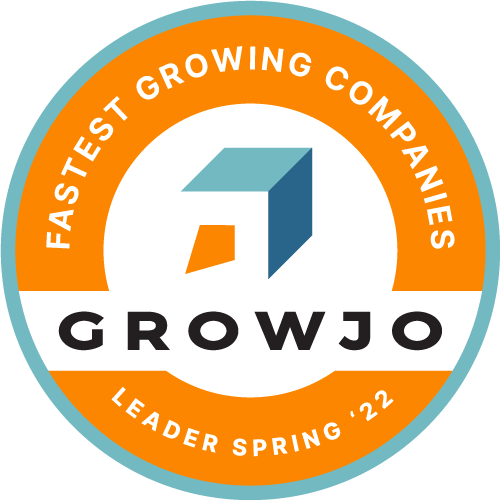17 Lead Conversion Tips to Turn Leads Into Purchasing Customers
Lead conversion is a challenging task for any marketer. After coming up with a prospect list, the next challenge is to convert leads into paying customers
In this article, we take a look at strategies that can help you better guide leads into your pipeline, and convert them into purchasing customers, and even advocates.
1. Research Your Target Audience
When building a strong lead conversion strategy, research your target audience. The information you gather can become fundamental to your other strategies.
Demographic information is a great way to start building your target persona, especially when targeting end consumers. Demographic information includes your target persona’s age, gender, ethnicity, income, and more. If you are a B2B business, researching viable industries can be a good starting point, too.
From there, find out specific information on market segments to build a hyper-focused profile of your target audience. This should include lifestyle choices, interests, and pain points that can help you and your team understand the decision-making process of your target audience. Knowing this information will help you better craft your marketing and sales messages to personalize your approach.
Below, reference a full list of the different categories of market segmentation you can analyze about your target persona.
Demographics: What is your target audience’s statistical data? What is their age, gender, ethnicity, income, education level, employment status, and marital status?
Geographics: Where is your target persona located geographically in the world?
Psychographics: What are the beliefs of your target persona? What are their attitudes, aspirations, goals, and interests?
Behavioral: How does your target persona behave? What do they do on a daily and weekly basis? What are their routine, habits, and lifestyle choices?
2. Identify Your Customer Journey
It’s important to map out the journey for most, if not all, of your customers. This map can become the backbone of your strategy if you choose to.
Your customer journey map should be able to tell you what your customers are doing at each phase of the journey. In turn, you can strategize actions and channels so that your brand is with them at each step of the way.
This will also help you track the effectiveness of actions and channel-specific strategies that you have. Your map can help you further improve your strategy as you gain more understanding of what works and what doesn’t when it comes to converting your customers.
Here’s a sample template of a customer journey map where customer activity, available touchpoints, opportunities, and a business’s actions are classified into phases of the journey.

You can further customize the map according to how you’d want your customers to interact with your brand. Detail all the actions as much as possible so your marketing and sales teams can nurture and convert leads with precision.
3. Structure Your Teams
Another important factor for converting new customers is to implement a structure that works for your business specifically. This means tailoring your entire sales process to consistently and efficiently guide your audience into conversion.
A common way of doing this is to start with two teams: one for existing customers, and one for new leads.
Structuring your teams doesn’t end at outlining your organization chart and designing everyone’s roles. Structuring your teams also includes designing your processes with specific goals in mind.
An example is designing a team to speed up the sales cycle flow. This involves designating people to take the initiative on certain tasks in your sales process, like qualification and scoring, and building a schedule around that.
Your structure should depend on a number of factors like target market, and average purchase value, among others. Identifying points in your process where there should be more people, and where tasks can be automated is a great way to start.
4. Segment Your Audience
Audience segmentation is another helpful practice for marketing and sales activities. Segment your audience, contacts, and leads depending on how specific or how broad you want to target them.
This can prove helpful in sending the right message to the right groups. In email marketing, for example, sending a real estate email to non-real estate leads could have negative impacts on your analytics and contact database.
Targeted advertising also benefits from properly segmented audience groups. You can also perform A/B testing on specific audience segments to further improve how you nurture them into your sales funnel.
5. Score Leads
Lead scoring is the process of attributing numerical points to actions your leads take. You can track these actions using behavior analytics tools on your website and other digital touchpoints.
For example, you may assign 1 point to a lead for following one of your social media pages, five points for subscribing to your newsletter, and 10 points for making an inquiry.
Setting up a lead scoring system may take some work, but its impact on your team’s workflow can become invaluable. You can do this manually or use tools like Marketo, Kentico, and HubSpot.
Knowing which leads are ready for conversion allows your sales specialists to work more efficiently, and helps drive up conversion rates. Scores can also be used to personalize interactions with your leads, which is highly preferred by most market segments.
6. Qualify Leads
As prospects become leads, it’s also important to qualify them. Implementing a lead qualification framework could help out with this.
Lead qualification is the process of determining which leads are most likely to purchase, and placing them in the right spot in your funnel or sales process. Done correctly, this helps sales reps become more efficient with the use of their time.
Qualifying leads involves determining a prospect’s disposition as a consumer using a qualification framework. A qualification framework like BANT uses budget, authority, need, and timeline as determining factors for a lead’s likelihood of becoming a customer.
Qualifying questions can also be used to identify a lead’s level of interest in purchasing a product or service. Here are some examples you use on a discovery call or a signup form:
- What problem/s are you trying to fix?
- What solution do you have right now and why have you chosen to switch?
- How often would you use the product?
- What does success look like after using our product/solution?
- Which problems would you want our service to prioritize in resolving?
- Who else is involved in deciding this purchase?
A lead is qualified when you ascertain that they have a good likelihood of becoming a purchasing customer.
Marketing qualified leads who submitted information to be on a marketing campaign become sales qualified leads after expressing interest in a consult call or a demo. Disqualified leads can be deferred back to a nurturing campaign.
Lead qualification helps your sales and marketing teams avoid wasting their time on leads who aren’t at all interested, and instead focus all their energy and time on converting warm and hot leads.
7. Nurture Leads With Email Marketing Campaigns
As previously mentioned, prospects who aren’t close enough to the purchasing phase can instead be nurtured. At the same time, lead nurturing also follows through the entire sales cycle as you keep leads well-informed in all phases of their journey.
Setting up email campaigns for specific groups of leads can be very helpful in nurturing them. Instead of spraying everyone with the same kind of approach and information, you can set up drip campaigns that match their level of interest in purchasing.
You may use your leads’ scores to determine which campaign they should be in. An alternative is to use whatever information you have on them to place them appropriately.
Warm and hot leads may respond better to nurture campaigns with compelling calls to action that drive purchase action. Colder leads may need to be put on a different type of drip campaign that delivers high-quality content and value and ultimately drives engagement.
8. Monitor Your Pipeline
Once you’ve determined your customer journey, sales process, and pipeline, it’s important to keep an eye on your pipeline.
Monitoring your pipeline allows you to keep a birds-eye-view of your sales process. It’s through this activity that you can observe the profitability of your processes per time period, and make adjustments for areas where progress slows down.
Here are some best practices to keep in mind for sales pipeline monitoring.
- Schedule pipeline monitoring regularly.
- Use a platform that automates data gathering for a faster workflow with less human error.
- Set and track key performance indicators and metrics.
- Keep account information and tags updated regularly.
- Aim towards speeding up your sales cycle flow.
- Identify and prioritize high-value deals.
- Analyze the successful members of your team and their approach to closing deals and reaching targets.
- Connect with teams and members who show signs of needing support.
- Ensure that closed deals are being nurtured with post-purchase activities.
- Constantly build your pipeline so reps have something to bounce back on when a lead defers or closes.
Here’s an example of a pipeline built to match the customer journey.

9. Act Fast
Most companies contact leads within 20 hours. However, an MIT quantitative study found out that the odds of calling leads drop dramatically within the first hour from creation.
This means that leads go cold very fast! You should structure your team for a speedy response time if one of your goals is to end up with more qualified leads in your funnel or sales.
10. Follow Up
Following up with leads helps with speeding up your sales cycle flow and maintaining an organized and classified lead database.
When following up, prioritize hot leads to ensure their engagement. Warm leads can easily be turned into hot leads when given the same attention.
A 90-day rule should remind your team to touch base on a quarterly basis to engage cold leads and also gauge their level of interest.
Another great rule of thumb is to work with a triangle of communication that uses phone, text, and email. Keep the triangle upright by using only two methods of contact in short periods of time. Using all three at once could prove to be overwhelming and annoying to contacts.
Virtudesk’s Director of Sales, Elias Diaz, recommends making sure a call is always one of the two avenues you’re using to follow up with leads.
Elias also shares that driving a follow-up into an appointment should be the priority. When your leads say “Now isn’t a good time to talk,” remember that there’s a huge difference between asking “When is a good time to connect?” and confirming “Are you available later this week/tomorrow?”
One can lose a lead’s interest while the other can assert your place in their calendar. Elias also shares that when a lead confirms a time, it’s imperative that reps confirm a lead’s email and send a calendar invite, possibly before the call ends.
Identifying trigger opportunities on web leads and using automation can also help make sure no one misses a beat when it comes to taking care of your leads.
Following trigger opportunities like signups, DMS, and link clicks can help your team follow up faster with leads who independently make their way into the different phases of your funnel.
11. Focus on Your Audience's Pain Points
Listening is a key skill in building and nurturing relationships. Make sure that everyone in your team knows how to do this in every possible way.
Train your marketing and sales team to listen to your audience’s pain points, both explicitly expressed, and those that are implied and expected of an unnamed prospect.
Gather probing questions that allow your reps to discover the main problems that your leads need a solution for. At the same time, consider social listening methods to discover common concerns raised by your prospects.
This helps your reps communicate the value of your products and services better, as well as tailor solutions that truly respond to a customer’s needs.
12. Build Relationships Through Social Media
Utilize the power of social media to your benefit by connecting with your target market on social media.
Set up an approachable touchpoint that appeals to a larger market to extend your reach as a brand. At the same time, use social media to touch base with prospects and introduce them to your sales funnel.
Here are some tips to do that:
- Post updates regularly to let your audience know that you’re available if they want to connect.
- Write inviting copies and actionable calls to action to establish an approachable persona.
- Work with templates to establish consistency and build credibility.
- Make the first move by engaging your followers through likes and comments.
- Write about relevant topics to establish thought leadership in your space or industry.
- Use bio links to provide additional resources and touchpoints.
Optimizing your social media pages to become a touchpoint for prospects can be a great way to generate high-quality leads for your sales team.
13. Establish Thought Leadership Through Content Marketing
Thought leadership in your industry doesn’t just work for your branding and market positioning goals, but also for your lead conversion strategy.
Position yourself as a thought leader with valuable and informative content like blog articles, eBooks, and social media posts. 73% of B2B marketers also cite webinars to be a reliable source of high-quality leads so consider that channel as well in your strategy.
The essence of establishing thought leadership is to provide value to prospects and leads through all possible means. This builds your brand’s credibility as well as the trust between you and your future customers.
14. Be Accessible
Staying within reach of your customers is another strategy that builds on your reliability as a service provider. Even if they haven’t purchased anything from you, establishing your availability for help inspires a positive perception of your company.
Remember to publish necessary contact information on your website, social media pages, and digital ads. Employing chatbots in this strategy also lets you have a continued presence even after office hours. Likewise, virtual assistants from other time zones can be very helpful in providing real-time human interaction.
Remaining accessible to your prospective customers and leads provides a continuous opportunity for lead nurturing, and overall helps drive your lead conversion rates higher.
15. Try A/B Testing
A/B Testing can be an invaluable strategy in the long run. You get to find out the best ways to engage your prospects, and you also get into the habit of nurturing different consumer segments at once.
A/B testing involves sending two versions of one collateral or campaign to two groups of your contacts or audience and monitoring the analytics of its reception.
This strategy can help you discover what works well in specific areas of your sales process. You may end up discovering that your prospects respond similarly or very differently to information compared to your hotter leads.
Try A/B Testing on the following:
- Email subject lines: classic vs experimental
- Infographic: long vs short
- Product description: paragraph vs list
- Email elements: moving/removing images, videos, etc.
- Content: written vs visual
- Ad Headlines: passive vs active
- Landing pages: dynamic vs static
- Instagram: Reels vs IGTV

A/B testing can help you discover more about your target market over time, providing you with actionable insights for both short-term and long-term conversion strategies.
16. Retarget Website Visitors
Retargeting is a digital strategy that involves identifying website visitors who match your target audience profile, then captivating them with retargeting ads outside of your website.
By using cookies on your website, it allows your display ads to be presented to previous website visitors who anonymously match the behavior that fits with your target market.
Retargeted ads perform up to 10 times better than the usual display ads. Keep in mind, however, that Facebook recommends using retargeted ads on users who visited your website within the past 30 days for the best results.
17. Adjust Your Strategy With Data
With the data you’ve gathered from the strategies that you’ve chosen to implement, don’t forget to also continuously improve your processes.
Highly effective lead conversion strategies are backed by data and improved with constant updates. Delegate this to someone specific or at least schedule regular meetings with your sales and marketing teams for opportunities to improve your lead conversion strategy.
Convert More Leads in 2022
As you grow a business, the number of your conversions and your conversion rates should also indicate some level of growth. This means that a lead conversion strategy needs constant work not just in execution, but also in improvements.
Should you need additional help in prospecting, marketing, or other lead conversion activities, virtual assistants can provide a huge helping hand without raising your cost per conversion through the roof.
If you’re interested in getting help with converting leads into customers from virtual assistants, fill out this form and one of our Consultants will get in touch with you.
More Articles From Virtudesk:
Share this article
Meet our Most Trusted
Partners & Clients

Byron Lazine
Co-Founding Chief-of-Operations at BAM (Broke Agent Media)I’ve been using Virtual Assistants for years throughout all of my companies. Once we found Virtudesk the process got even easier and allowed us to scale out our hiring. Highly skilled and accountable professionals. 100% recommend!

Rebecca Julianna James
Realtor / Content CreatorBefore getting started with Virtudesk I had my doubts that they would find what I was looking for. I needed a very particular person to add to my team and let me tell you I am highly pleased! My virtual assistant Myril is the best! I am excited to grow my socialmedia accounts with her. Thank you Virtudesk!

Chelsea Erickson
Realtor La Belle RE GroupI am very happy with the assistance Virtudesk is providing for my real estate business. This is a newer position for my company and we are working through the creation and efficiency.

















